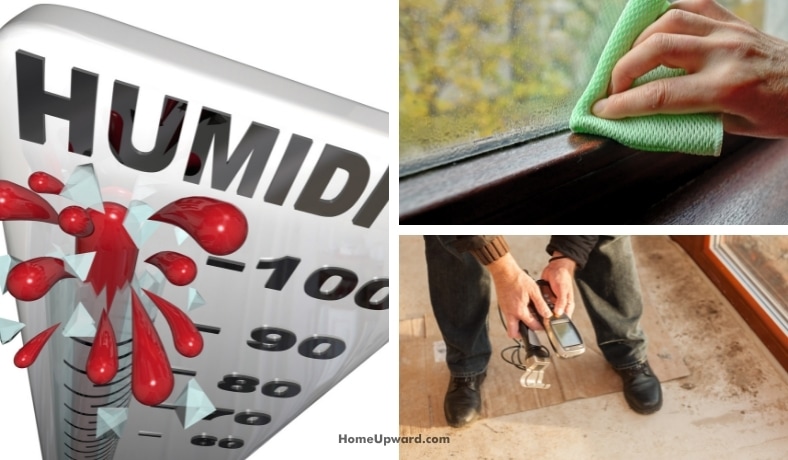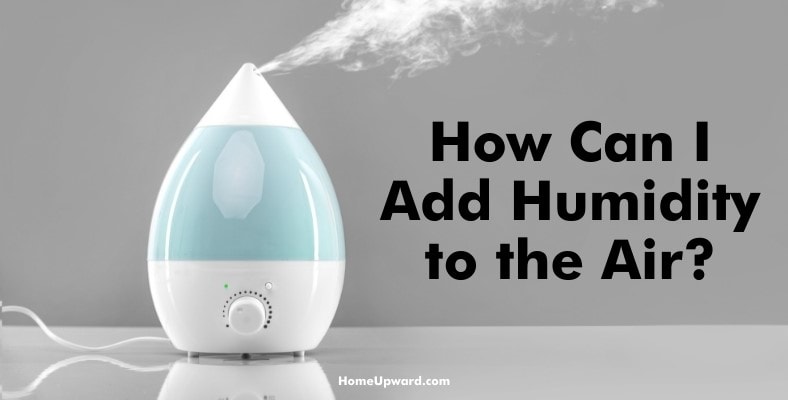There’s a delicate balance between humid and dry air in your home, each of which comes with potential complications. When considering how to test the humidity in your home, you’ll need to use a hygrometer.
Contents
Using a Digital Temperature and Humidity Gauge
Digital tools are more common in all areas of life these days. Digital temperature and humidity gauges are easy to find at your local hardware store or online.
Place the digital hygrometer 3.3 feet above the ground for the best reading. After about three minutes, the device will show the relative humidity in the room.
Old-Fashioned Humidity Gauges (Hygrometers)
Leonardo DaVinci invented the first known hygrometer more than 500 years ago. He used a ball of wool and a scale. He discovered that as the humidity drops, the wool weighs less. As the humidity increases, the wool weighs more. This measurement is not highly accurate, but it was a good first tool.
Around 200 years ago, Horace Bénédict de Saussure created a hair hygrometer. He measured the hair completely dried out, then wholly submerged. He set those values as the base for 0% and 100% humidity. Then, as the hair length changed, it showed relative humidity.
Today, psychrometers are the most common old-fashioned hygrometer in use. It uses two separate thermometers; one wet and one dry. The comparison between the difference in temperature between the two thermometers determines relative humidity.
Pros vs. Cons of Each
The digital hygrometer is more accurate because of the scientific advancements in the last 200-500 years. If exact humidity readings are necessary, digital will give the most precise reading. They are also more accurate in extreme temperatures.
Old-fashioned hygrometers are reasonably accurate and are fascinating to work with. However, their thermometers often need calibrating, and knowing how to use them properly is a technical skill not everyone has.
Digital hygrometers are often less expensive than old-fashioned gauges, and their ease of use might be a better option for many people. Either method is acceptable for how to test the humidity in your home.
What Is a Good Humidity Level?
A typically acceptable humidity level is between 20-50%, so you’ll want to aim for that in your home.
High, Low, and Comfortable Humidity Ranges
There are three options for humidity in your home: high, low, and comfortable.
High humidity is anything above 50% humidity, and the higher the percentage, the more discomfort you’ll notice.
Low humidity is below 20%. Of course, the lower the percentage, the more damage and discomfort you’ll feel.
Comfortable humidity is anywhere between 20-50%. This percentage is the perfect range because it allows the wood in your home to stay conditioned without warping from too much or too little moisture. It also provides for the body to regulate its temperature and comes with the least health risk.
What Are the Symptoms of High or Low Humidity?
It is essential to know the difference between the signs of high and low humidity so you can appropriately test the moisture in your home and solve the problem.
Low Humidity
Low humidity causes problems with your body. Dry skin, chapped lips, lung irritation, and coughing are some of the noticeable signs that the air in your home is too dry.
Dry air can also damage the home by causing cracks in the drywall or windows and door frames as the moisture leaves the wood. Wooden floors will creak more as the water evaporates and can even begin to separate from itself.
High Humidity
One sign of high humidity is to put a glass of cold water on the counter. Leave it for a few minutes. If the glass is covered in condensation when you return, you have high humidity in your home.
Another sign of high humidity is when unfinished wood doors or cabinets suddenly won’t close properly. The wood collects the moisture and swells. This swelling goes away when the room has lower humidity, and while it might warp the wood some, there shouldn’t be much long-term damage.
Physical signs of high humidity are the inability to regulate body temperature. When the room is hot and humid, your body can’t cool down by evaporating sweat. This inability to cool appropriately can cause health problems for some people.
Another risk is mold, mildew, and fungus growth. Moisture makes it easier for these to grow and causes infections in humans and rot and decay in the home’s wood. If you see mildew in your home, the humidity is probably too high.
How Can I Add Humidity to the Air?
You can add humidity by leaving shallow bowls of water around the house. The water evaporates into the air, and if the windows are closed, it has no escape. It adds humidity to the atmosphere temporarily.
A humidifier or evaporative cooler adds humidity to the air as well. Evaporative coolers use fans and cold water to cool the house while adding moisture to the atmosphere. They often have limited settings, however, and make the air in the home too humid.
How Does a Humidifier Work?
There are two types of humidifiers: a cool-mist humidifier and a warm mist humidifier.
A cool-mist humidifier is an excellent option for adding humidity to the air during the hot summer months. It doesn’t add to the temperature of the air, just the moisture level.
A warm mist humidifier is great in the cold winter months because it uses warm air to add moisture and heat the air. These are more commonly used in small rooms when you have a cold or flu and need to stay hydrated.
Whether warm or cold, humidity does make you feel warmer, though, because of the added moisture in the air. The more moist air holds sweat on the skin, making it harder to cool your body naturally, even though it isn’t any hotter in the room.
Indoor air quality is greatly affected by humidity, and staying within an optimal range is best for comfort.
How Can I Get the Humidity out of My House?
Removing humidity is simple, and there are many options. Choose between the following options – or perhaps select a few methods.
Get a Dehumidifier
A dehumidifier traps the moisture in the air and removes it before circulating more air through the house.
Open Windows
If the moisture inside your home is higher than the humidity outside, open the windows so that the moist air can move out and drier air comes inside.
Use Your Air Conditioner
An air conditioner will dry the air by forcing out the hot, humid air and circulating the cool, dry air. Air conditioning cools the room and reduces moisture, making it an incredibly effective method for making your home more comfortable.
Use Your Exhaust Fans
Exhaust fans in kitchens and bathrooms take the air that’s heated and humidified from cooking or bathing and force it out of the house. Removing the humid air at the source makes it less likely that your home will become more humid, too.
Use Charcoal
It might seem silly, but charcoal absorbs moisture in the air and will reduce the humidity in your home. You’ll want to put briquettes in small containers around the house and change them every few months, but it will reduce the moisture.
Dehumidifiers and Air Conditioning Similarities
Dehumidifiers and air conditioning both reduce humidity in the air, even if the methods are different.
Dehumidifiers remove the moisture from the air. They come as an addition to your furnace or as stand-alone devices you can put throughout your house.
Air conditioners force the hot, humid air out of the house, making room for the cooler, dry air. They’re most effective if you have central air conditioning, but individual room-specific air conditioning works, too.





